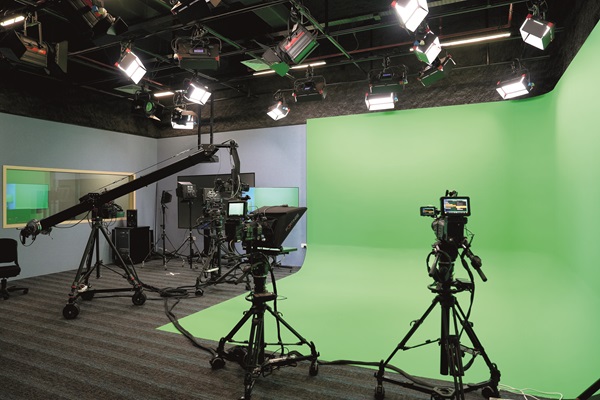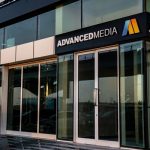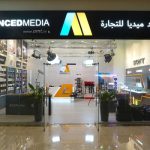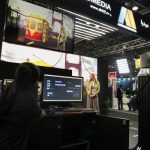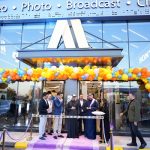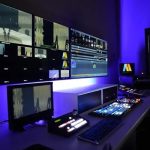BroadcastPro ME takes a tour of the cutting-edge studio at the Higher Colleges of Technology’s Yas campus, integrated by Advanced Media Trading. This state-of-the-art facility promises to ignite creativity and transform the educational journey for a fresh wave of aspiring media professionals.
A media production lab installation involves the comprehensive design, assembly and configuration of a unit dedicated for audio-visual purposes. From a student learning perspective, it must have the necessary machinery that lets them experiment, explore and craft – an interactive space that’s functional, educational and bespoke to cover a spectrum of creative endeavours.
When the Higher Colleges of Technology (HCT) ventured to build a spanking new media production lab for its Baniyas Abu Dhabi campus, it turned to local distributor and systems integrator Advanced Media Trading (AMT) for delivery of an all-in-one multimedia lab. Customised, flexible and scalable, the result is an innovative facility for virtual productions, green screen work, broadcast, podcasting and photography, among others, guaranteeing top-tier results across all platforms.
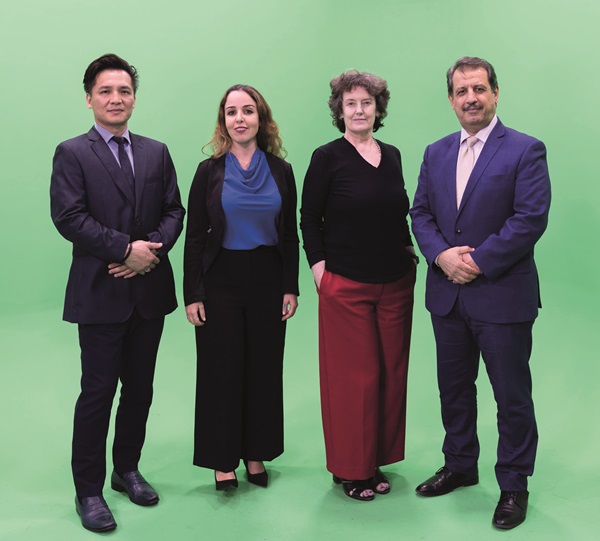
The broadcast studio at the heart of the lab conceived and integrated by AMT is designed to use the most progressive real-time creation tools alongside traditional broadcast systems. The virtual production set-up is based on Unreal Engine, generally deemed the future of the media industry. It allows real-time integration of live footage with virtual sets, giving scope and range to a variety of productions, from immersive virtual environments to interactive presentations.
HCT’s objective behind the lab was to merge the college’s applied media courses with first-class learning facilities that would provide students with an elaborate technology-aligned programme in digital media and content design, integrating immersive technology.
Based on a standard, the syllabus is the result of extensive research. HCT benchmarked 70 universities globally, meticulously measured and considered their programmes, material and curriculum, and did market research on industry needs, requirements and careers for students after graduation. The outcome was two new courses launched in August 2024: Bachelor of Digital Media, and Bachelor of Design and Media Production.
The college’s primary target is Emiratis, and HCT has received its first cohort of new students who will be utilising the new lab and equipment. The team responsible for the students, faculty, operations and schedules are the Executive Dean, Dr Rachel Bentley; Associate Executive Dean, Dr Mohammed Shukri; Academic Programme Chairs responsible for structuring the courses in Applied Media, Dr Kevin Trinh and Zakaia Cvitanovich; and Dr Nada Abdul Baki, Division Chair for Applied Media.
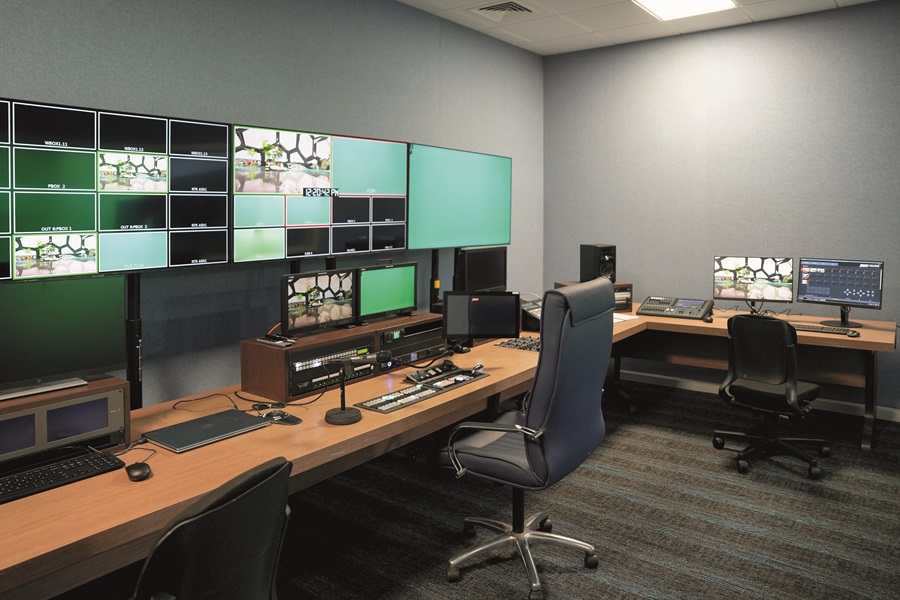
Work on the 200sqm cutting-edge multimedia lab began in March 2024 and was fully completed in July 2024. Designed for broadcast, photography, podcasting and virtual production, the suite encompasses pioneering technology from top industry vendors, establishing it as a hub for contemporary content creation.
In lab design and execution, Advanced Media was backed by 20-plus years of expertise in MENA professional broadcast, cinema, video and photography installation. Being the largest supplier of broadcast equipment and accessories in the UAE made the switch to systems easier in terms of amalgamating multiple, varied and complex alignments.
Technologies invested in the lab cover a compelling and powerful stable of equipment from the world’s finest technologies. Equipped with premium audio gear, the space promises clear, high-quality sound for broadcasts, podcasts and recordings. It also includes a range of backdrops, a seating area and a pre-shoot preparation space that offer a professional and comfortable setting and environment.
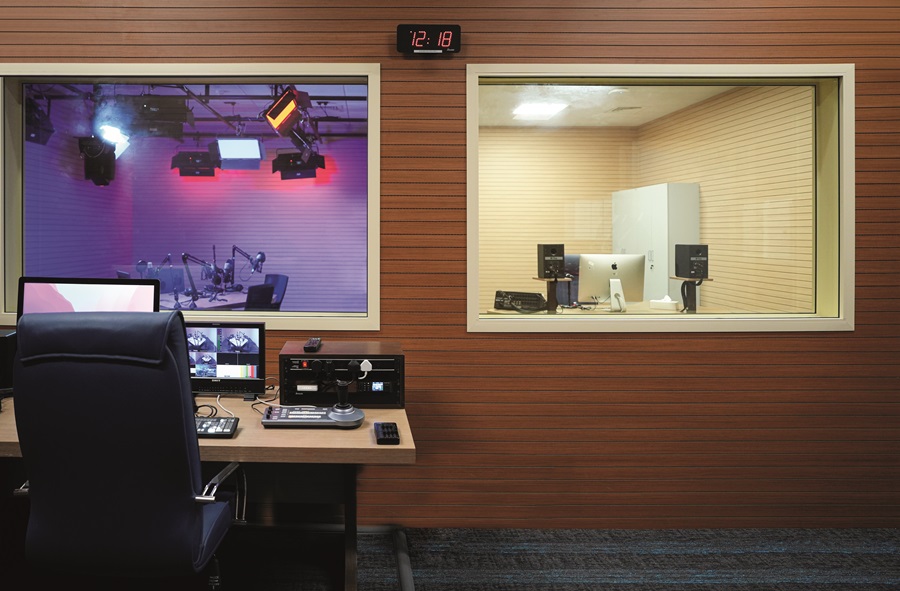
The lab’s podcasting set is improved by Sony PTZ cameras, allowing easy control and seamless integration into live streaming workflows. Cinematic cameras are also infused into the broadcast workflow. The lab features a Ross Video vision mixer and production equipment for advanced virtual production.
Other elements are PlayBox Character generator and video server systems, audio-video monitoring solutions from Wohler, professional-grade lighting and power solutions from SWIT, Hollyland intercom and wireless communications systems, professional audio microphones and wireless systems from Sennheiser, Rode high-quality microphones for podcasting and live recording, Godox versatile lighting equipment for the photography studio, and an EditShare media asset management (MAM) system for efficient workflow.
“The podcast set-up accommodates up to six participants with professional equipment for visual podcasts and live streaming. Each audio and podcast section includes a dedicated control room for smooth management,” says Cvitanovich.
Fitted with 4K formats, AMT also implemented a cinematic look with the broadcast workflow in the lab, using Sony FX9 cameras. The CCU has Sony RCP to control colours, to add better visibility and brighter display during operations.
“Advanced Media is committed to fostering innovation in education” – Abdelrahman Elalfy, Head of Corporate Sales, AMT
“With class sizes going up to 25, the course is structured into groups of five so that while creating a production video there are people on cameras, in the broadcasting room, in audio and so forth, so that students get to handle different techniques in video production that enhances their skills,” explains Cvitanovich.
Immersive art is deeply embedded in the new curriculum, alongside VR and AR. The defining feature of immersive art is that it is a meticulously designed, multi-sensory environment giving scope and new direction. “The virtual production set up in the new lab employs Voyager from Ross, giving students the power of creating stunning virtual environments,” says Abdelrahman Elalfy, AMT’s Head of Corporate Sales.
HCT has invested in Meta Quest headsets and Wacom drawing tablets “to help students get into the digital side for fundamental drawing, the foundation of visual design, digital and visual storytelling, and typically to improve on their drawing skills”, says Dr Trinh. HCT is also concentrating on augmented reality, part of the reason for the green screen. It currently operates as a trackless augmented reality system, which means the camera lacks any sensors.
“We are looking into augmented and extended reality, the whole digital-immersive narrative, and hoping to collaborate with technology companies and international immersion artists, the details of which we are working out, to conduct workshops with faculty and students that will help strengthen our design strategies while simultaneously helping students tell their stories through pictures,” explains Dr Trinh.
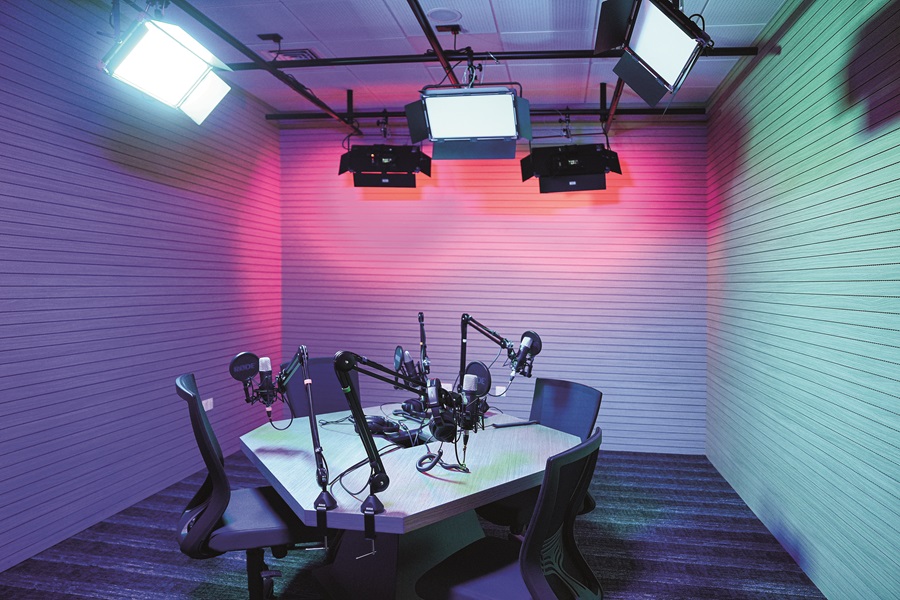
As social media continues to expand the reach of various platforms, there is increasing appetite for media production courses, and particularly for HCT. With its exciting new collaboration with CNN, the college aims to attract up to 200 students. To enable them to thrive, HCT provides an industry-aligned programme, an apprenticeship model that is competency-driven, practice-based and develops interdisciplinary applied skills.
“From year three on, students are placed with companies, giving them first hand experience. That’s the way we have structured the course,” says Dr Shukri.
AMT hosted in-depth and thorough training sessions after the lab was fitted, including a detailed one for lab instructors, who in turn trained the faculty. “With technology that is constantly evolving, our lab instructors keep up with trends and advancements,” says Dr Shukri. “And the training we received from Advanced Media was very helpful.”
The faculty hopes the new equipment will motivate students into post-production, creating relevant content, etc. “With an installation such as this one, this is what we are typically looking to address.”
To streamline post-production, the EditShare MAM system in the lab controls media workflow, ensuring efficient organisation and retrieval of media files. It boosts productivity by reducing time spent searching for assets. Able to retrieve or review anytime, anywhere, EditShare’s sophisticated lighting design and custom configurations for Cyclorama and the main studio provide adaptability for various creative projects. “It is very important for students to understand this workflow, which they can use later in a TV station or media facility,” explains Elalfy.
While the MAM system doesn’t incorporate direct AI, it features a connection to AI that allows the integration of a module at any time to identify images, videos or individuals within them. HCT has included AI in both its digital media and media production courses. “Each contain AI modules and features as well as ChatGPT and Adobe Firefly functions,” says Dr Nada Abdul Baki.
“Collectively, the colleges feature a virtual production set-up, a cinematic studio and podcasting studios” – Dr Nada Abdul Baki, Division Chair For Applied Media
The Abu Dhabi Baniyas campus, which has been operating for a year, is part of a cluster that includes locations in Abu Dhabi, Dubai, Sharjah, Fujairah and Ras Al Khaimah. “Collectively, the colleges feature a virtual production set-up, a cinematic studio and podcasting studios,” adds Dr Abdul Baki.
Al Baniyas HCT follows a coeducational model, allowing men and women to learn together in the same environment. This is the second semester with a mixed-class approach enabling both genders to collaborate on group projects.
HCT plans to enhance and modernise the Dubai and Fujairah campuses in the future, and hopes to work with AMT on precisely the sort of groundbreaking technology that it can offer to the institution.
“Advanced Media is committed to fostering innovation in education,” remarks Elalfy. “By partnering with HCT, we aim to provide students with cutting-edge tools and training to excel in the media market.”




































































